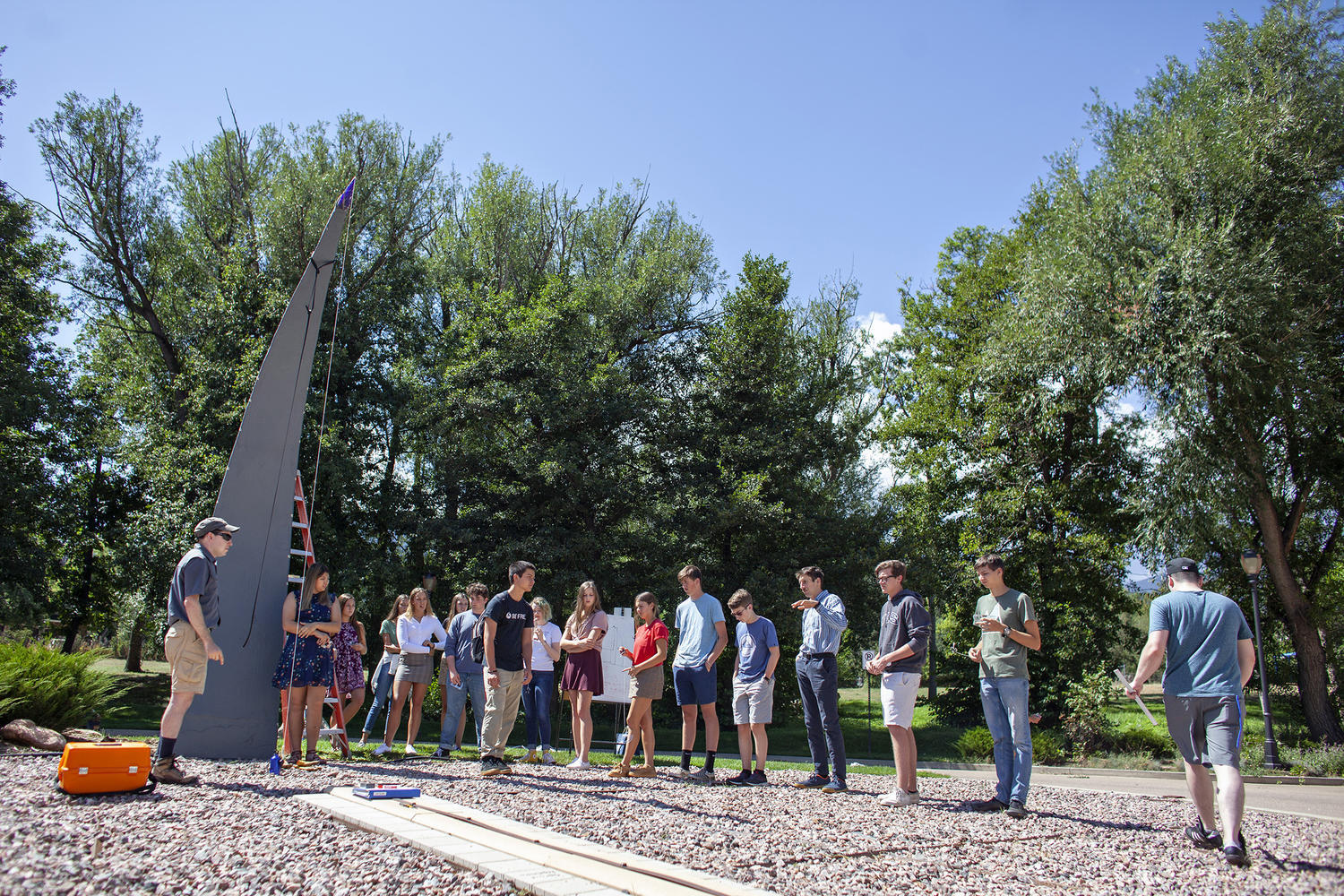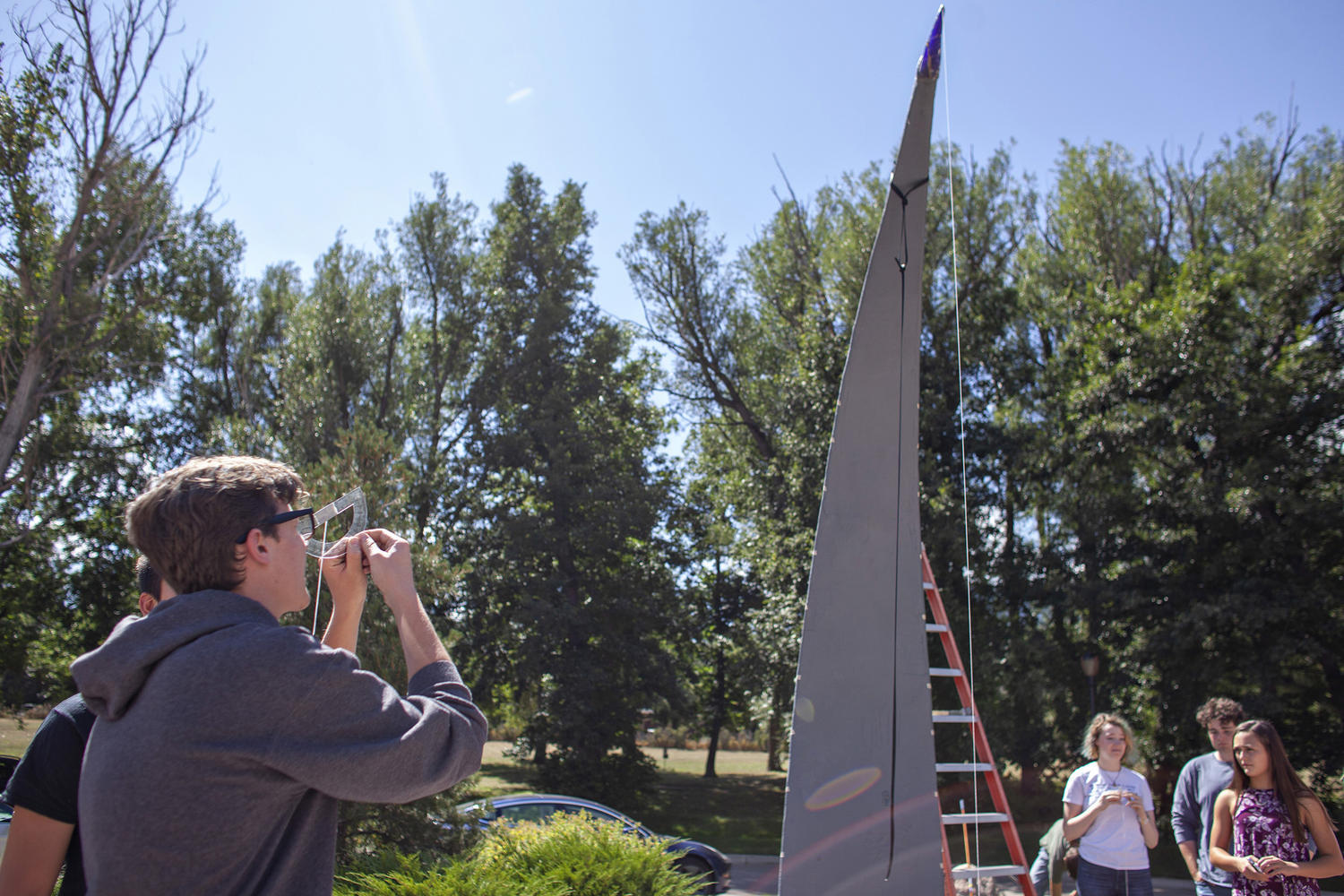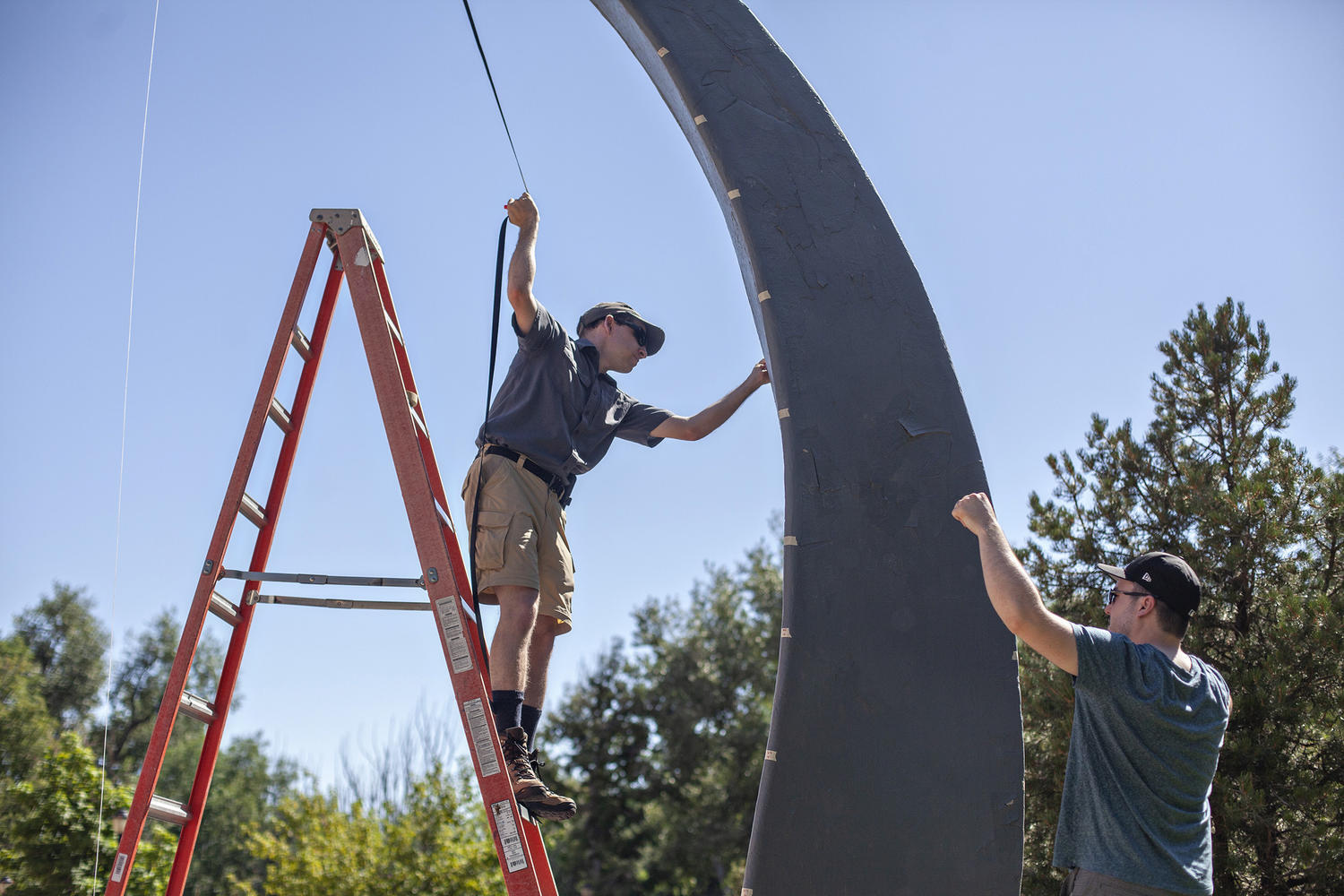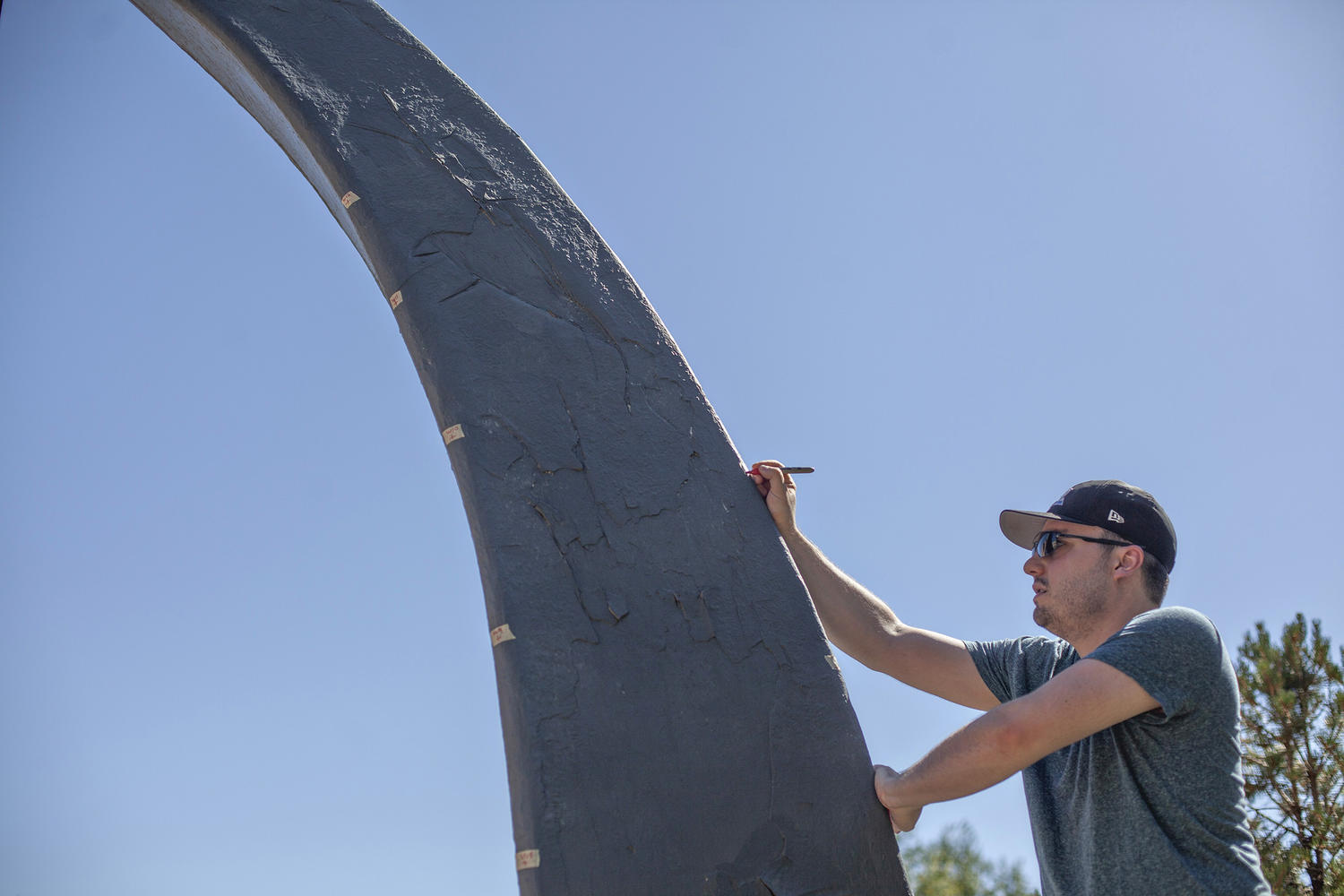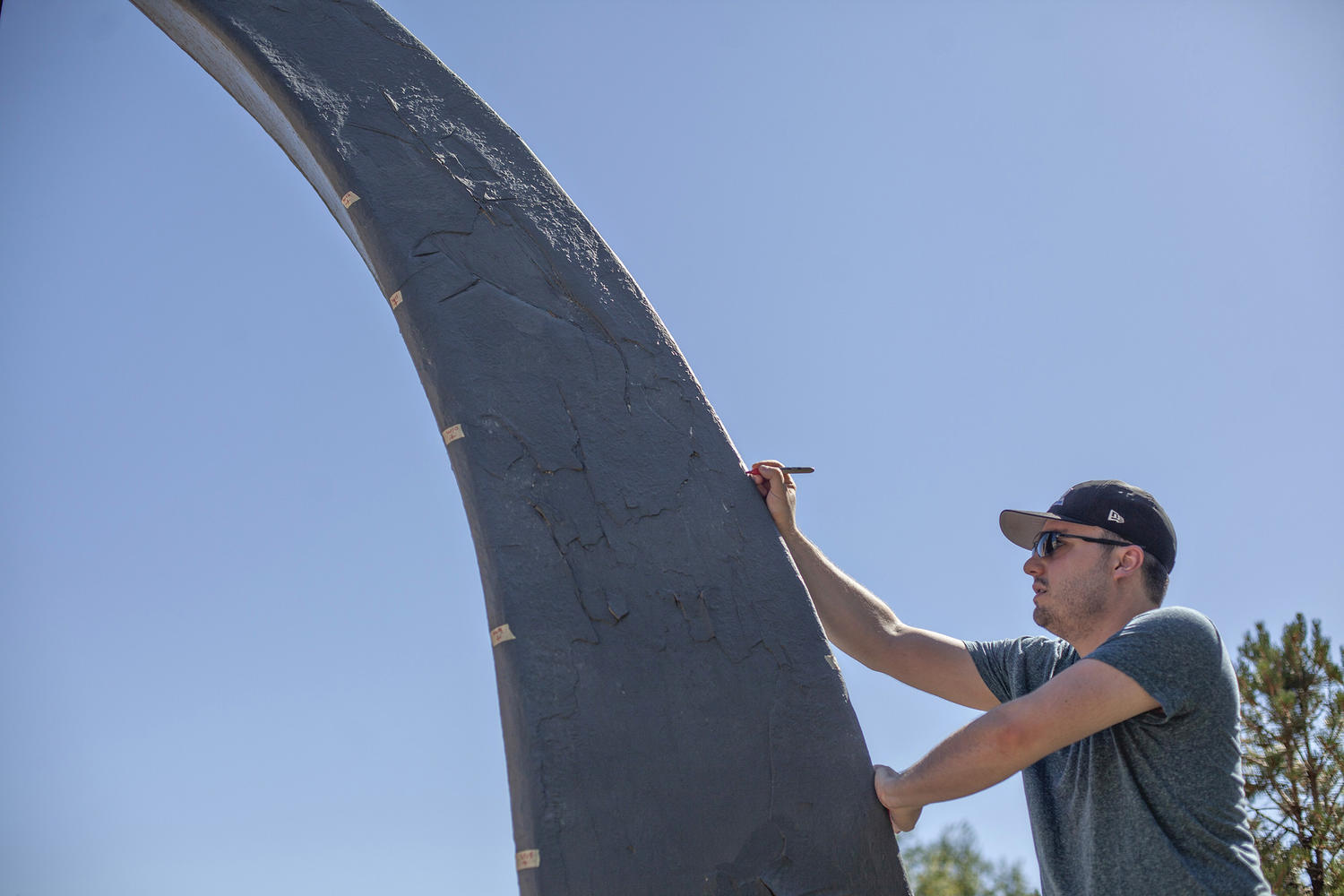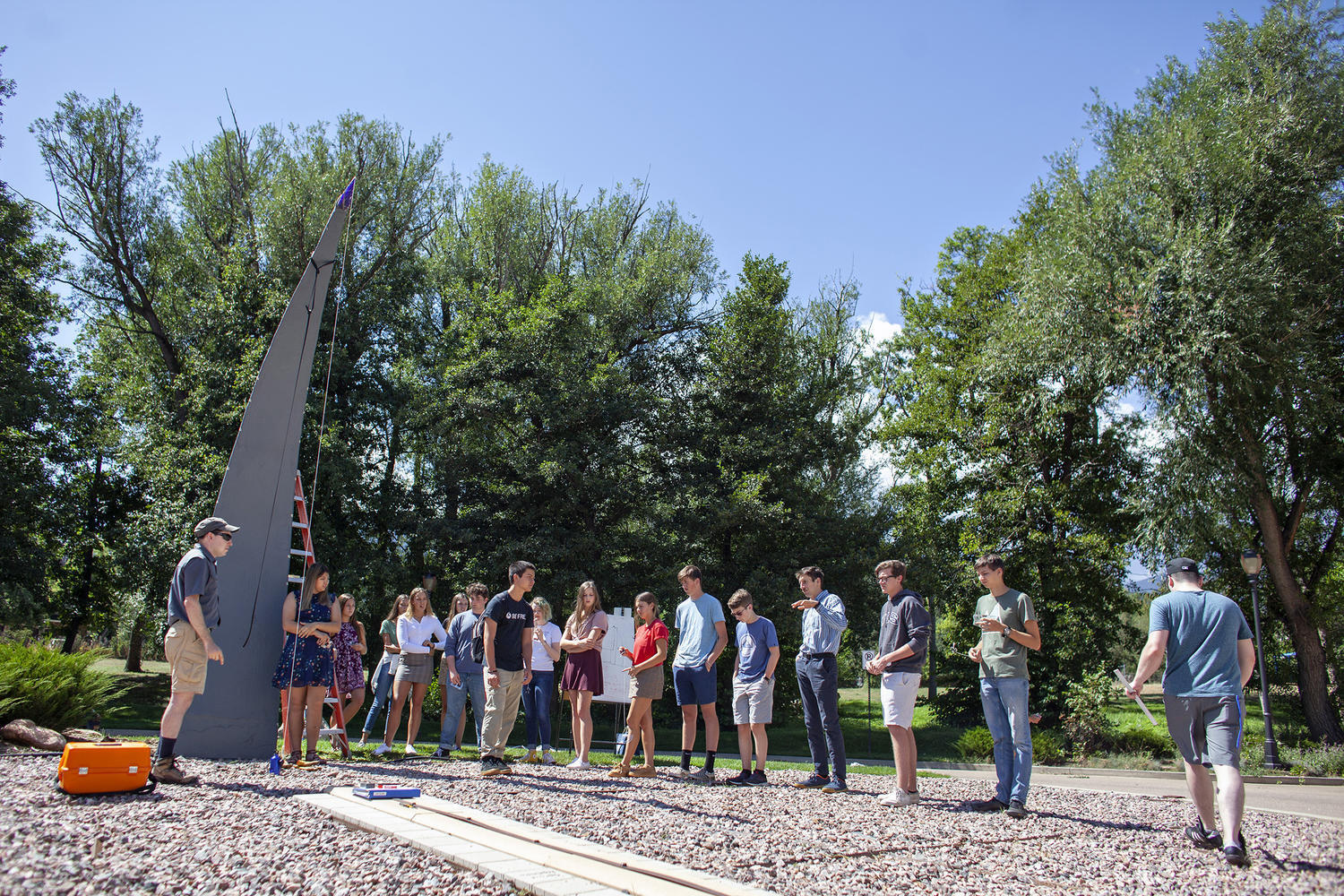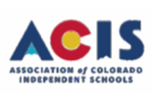Driving cross-country from California to Florida, alumnus Max Fagin ‘06 took a break at The Colorado Springs School to make sure the giant sundial outside of the El Pomar Academic Center is still accurate. He, along with classmate Tyler Boschert ‘07 and others, began the project in 2006 during an Experience-Centered Seminar on archeoastronomy.
Boschert, a patent attorney in Denver, joined Fagin on Thursday to help with calculations. They also saw it as an opportunity to engage with current students and used the sundial to teach hands-on advanced math to Upper School students in FST (Functions, Statistics, and Trigonometry) class.
“It’s a great lesson for trigonometry,” said Fagin, who works for Made In Space, a company that specializes in state-of-the-art space manufacturing technology.
Students made inclinometers with protractors, string and paper clamps as weights. The goal was to measure the height from the ground to the sundial’s gnomon, the top part that casts the shadow and resembles a Kodiak claw.
“When you build an inclinometer, it gives you the ability to measure not just angles but also over very, very long distances that you couldn’t extend a ruler or tape measure across,” Fagin said. “Trigonometry allows you to compute all sorts of information about triangles from a few pieces of information, which is really, really useful.”
The alumni went over what calculations students would need to determine the gnomon’s height before they measured for themselves. When students became stumped by an algebraic function, Boschert and Fagin reassured them.
“This reminds me of what (CSS teacher) Greg Johnson used to say: Trigonometry is easy; Algebra is hard,” Boschert said.
“Yeah, it’s always the algebra that slips you up, even in my job,” Fagin added. “I’m an engineer, and it’s the algebra that gets you.”
Boschert shared that two days before the sundial was dedicated in 2010, it was off by a few hours. He and Fagin spent an evening trying to figure out what went wrong.
“We had one stray negative sign that was in a system of 30 or 40 equations that had screwed everything up,” Boschert said. “We came back the next day, and it worked fine.”
The example was one Whitney R. ‘21 appreciated. Not everything goes well the first time.
“They’re talking about how they did hundreds of measurements during an ECS, and we’re out here just doing one. I think it shows the depth ECSs go into, just talking about how precise things can get and how complicated math can get. It’s really cool to hear that,” she said. “And I think it’s really cool that alumni are coming back to teach us.”
Students worked in small groups to measure the gnomon’s height, and some were nearly spot on. It measures 15.5 feet high.
The alumni relied on a theodolite, a precision optical instrument, to calculate if the sundial is still accurate - and it is. They were concerned flooding from the campus creek in recent years may have shifted the foundation.
“The theodolite is fundamentally no different than what you were doing with the inclinometers you made in class today, just to a higher level of precision,” Fagin told the students. “Using tools like this, computerizing them, putting them on a robot that can automatically track objects, this is how you can measure things in the real world, no matter how far away they are. You can even use this method on stars and other galaxies.”
Learning from alumni helped Alair F. ‘21 realize what she’s studying now will benefit her throughout life.
“You can go into these fields that relate so much to what we do in the classroom. And the experience of being able to go out to a sundial that not a lot of schools have and understand what it meant for CSS students to build it, that is really interesting,” she said. “Them coming back to work on it shows school pride that goes beyond your high school years.”
After students returned to class, Fagin said working with them is “appropriately nostalgic.” Boschert enjoys helping them glimpse into the future.
“It is really rewarding for me because I think when you’re in math classes, especially in high school, there’s a certain aspect of when am I ever going to use this, what is this good for? And to show this is actually good and useful information, I like that.”


